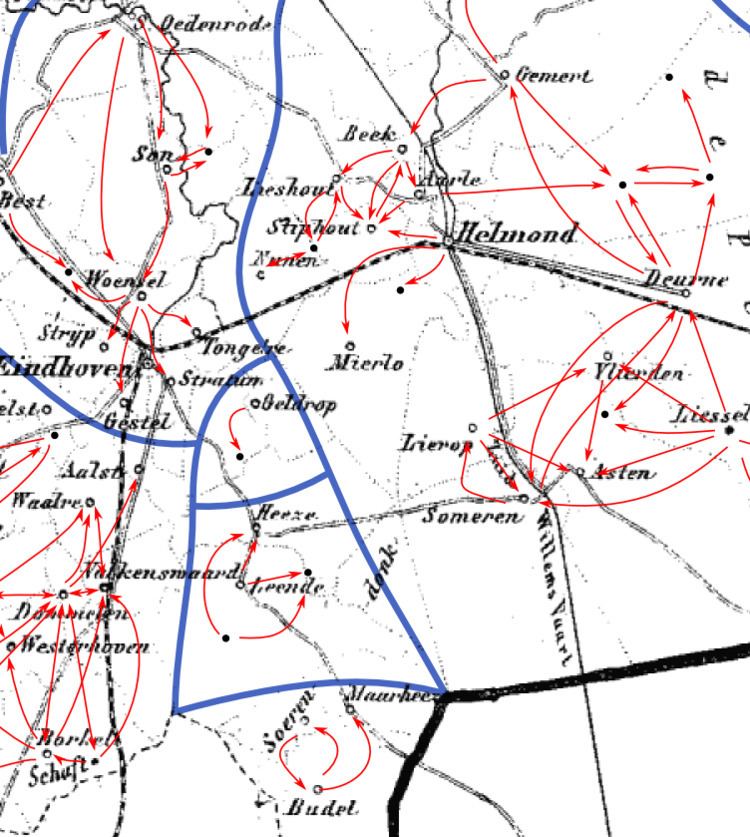 | ||
East Brabantian (Dutch: Oost Noord-Brabants or Oost Brabants) is one of the main divisions of the Brabantian dialect groups which the Woordenboek van de Brabantse Dialecten recognizes. East Brabantian dialects are mainly spoken in the eastern part of the province of North Brabant. In the classifications of Brabantian is recognized it as a separate dialect group. Sometimes it is called Meierijs, after the Bailiwick of Den Bosch. East Brabant dialects are further subdivided into the Kempenlands (in a large area east and south east of Eindhoven, including Arendonk and Lommel in Belgium), North Meierijs (in an area south of 's-Hertogenbosch into Eindhoven), Peellands (in Helmond and surroundings), Geldrops and Heeze-and-Leendes. The last two are small local dialects that are found as separate groups in few other classifications. Not to East Brabantian belong Maaslands (including Bosch which is put among the Central North Brabantian, although other classification systems also describe it as East Brabantian), the Land-van-Cuijks (which has many similarities with neighboring South Guelderish and the Northern Limburgish dialects), Kleverlands ( a South Guelderish dialect) and Budels (linguistically a Limburgish dialect).
Characteristics
East Brabantian dialects differ on some points distinctively of the more western variants: Central Brabantian and West Brabantian and also from the southern dialects like Southern Brabantian, Kempens and Getelands. Some peculiarities are typical eastern and shared with the Limburgish dialects, others only occur locally. East Brabantian dialects have been somewhat influenced by the Cologne language expansion of thus have a few characteristics that typically east of nature and which the western variants do not have. Such differences include umlauts in diminutives, and the conjugation of Germanic strong verbs (like in Limburgish). Typical East Brabantian words are therefore geleuven vs Dutch geloven (believe), bruur vs Dutch broer (brother) and zuke vs Dutch zoeken (search). Also diminutives as menneke vs Dutch mannetje (little man) and jeske vs Dutch jasje (little coat) and conjugations as velt vs Dutch valt (falls) are typical East Brabantian.
